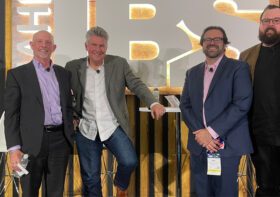MORE GREEN: New Requirements and Builders that are Meeting the Challenge
Did you catch Ron Nestor’s latest article in the August issue of Builder and Developer Magazine? If not here it is… Enjoy!
Just as we find that Green Building design has moved into the mainstream of our industry, there are upcoming game-changing events on the horizon. While these events will take time to roll out, be aware that they are coming. The newest version of the LEED TM program, originally to be named LEED 2012 has been delayed a year and will be called LEED v4.0 with broad changes to every credit category and more rigorous requirements. Additionally, the International Green Construction Code was released in March, and may eventually be adopted by states and local jurisdictions. And the Third Edition CALGreen Nonresidential requirements went into effect on July 1 of this year in California. Understanding the increasingly complex requirements, standards, options, and point systems can be daunting, and requires constant monitoring. Architects and Home Builders now, more than ever, must get serious in their Green Efforts as they will be required to implement them.
At William Hezmalhalch Architects, we have a dedicated Sustainable Design Studio entitled GREEN S.P.A.C.E. headed by Principal Cathy Baranger to stay on top of this ever-fluctuating field. The Studio’s efforts go beyond building design and encompass Community Planning, Greenhouse Gas Plans, Site Planning and more.
Having been involved in numerous LEED TM and Build-it-Green TM projects over the years, we and our savvy builder clients have anticipated these trends and have led the way in bringing affordable Green solutions to the marketplace. Two of our clients in particular, City Ventures and Meritage Homes, have made bold commitments to Green Building and have stayed at the forefront of the movement. City Ventures has recognized both the value of Green as a sales strategy but has carefully studied buyer’s reaction. In essence, they have found that developing an all-electric home is one key. Contrary to the long-established norm in Southern California of providing natural gas for heating, water heating, drying and cooking with electric for everything else, their approach reduces infrastructure costs by eliminating the metering and piping of gas (which, particularly in a large multi-family building, a complicated and costly system). Another key point is providing a rooftop solar array sized to provide for nearly all of the electrical demand, including an electric car charging station which is provided in every garage in every project. City Ventures has been installing Energy Star® rated appliances including GE’s advanced Hybrid Water Heaters (typically the second-highest energy user in the home) that when installed within the home’s interior, utilize the ambient room temperature to preheat the water, making it the most energy efficient water heater on the market. City Ventures demonstrates that their Green measures, while they don’t increase the cost of the home, provide real savings in the homeowner’s typical monthly expenses with the elimination of a gas bill, a minimal electrical bill, and even potentially savings at the gas station.
Meritage Homes has demonstrated a similar commitment to Green solutions, evidenced by the Gold Nugget Grand Award winning project Ragle Ranch in Santa Rosa, California. Recognized with a special Green Point Rated TM award, the homes are 39% more efficient than the high standards required by California’s Title 24 energy law. The homes are Energy Star® certified utilize advanced ventilation design and low-emitting products to maintain indoor air quality, with indoor and outdoor plumbing and irrigation systems that dramatically reduce water consumption. They believe that their homes will save approximately $3000 annually in utility costs.
We recently toured the Noritz Tankless Water Heater’s American headquarters in Fountain Valley, CA, to understand the many advantages of these energy-efficient appliances and also to understand some design limitations. Saving approximately 40% in energy costs, taking far less space, and taking far less space than standard water heaters, these gas-fired units require careful understanding of venting requirements.
I remember not long ago, when California implemented tough new requirements for energy usage for flat-screen televisions. A cry was raised that manufacturer’s would not be able to sell in the state. Well, in no time at all, all manufacturers were meeting the standard. Similarly, manufacturers of Building Systems have been leading the way so that implementing these stricter Green Building requirements is indeed very achievable.
Ron Nestor, AIA, LEED AP, is a Senior Principal of William Hezmalhalch Architects (WHA) in Santa Ana, California. Ron’s focus includes Commercial, Mixed-Use and High-Density Residential Environments. Ron can be contacted at ronn@whainc.com
You can also find it on-line here: http://www.bdmag.com/magazine/2012/aug/index.php




Leave a Reply